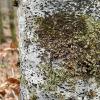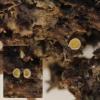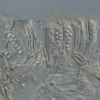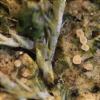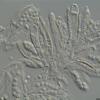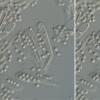
26-12-2025 21:19
Arnold BüschlenPithyella chalaudii Priou. Ist als Bryoparasit in

21-12-2025 09:32
Hello.A tiny ascomycete found embedded in wood in

18-12-2025 21:17
Pol DebaenstThe identification took me to Byssonectria deformi

24-12-2025 17:08
Hulda Caroline HolteHello, I have found this propoloid ascomycete on

21-12-2025 21:32
Pol DebaenstHello, Garden, Burgweg 19, Veurne, BelgiumOn 10/1
Siehe dazu:
Priou, J.-P. 2008. Ascomyce?tes rencontre?s sur l'he?patique corticole Frullania dilatata. – Bul. Soc. Mycol. France 124, 35–54. 03
https://bryophilous.co.uk/pithyella-chalaudii/
Bryophilous ascomycetes of North America – an overview of the recorded species
Peter Do?bbeler*, Paul G. Davison & William R. Buck
Nun konnte ich P. chalaudii auf einem weiteren Wirt, auf Radula complanata finden.
R. complanata und F. dilatata kommen als Epiphyten an ähnlichen Standorten vor. Vereinzelt wachsen sie auch auf Felsen und bevorzugen luftfeuchte Standorte. Oftmals wachsen sie neben- und ineinander. Beides sind beblätterte Lebermoose die durch ihre guten Merkmale bereits im Feld mit einer Handlupe 10x gut zu unterschieden sind.
P. chalaudii bildet auf abgestorbenen Substrat viele kleine Apothecien, Die Sporen sind sehr klein, um 2-3µm, rundlich, warzig, farblos.
Die Asci 25-40µm lang, 8-sporig.
Die Mik Merkmale sind nicht gestapelt. In Wasser eingedeckt.
Grüsse Arnold Büschlen


Peter Do?bbeler*, Paul G. Davison & William R. Buck

